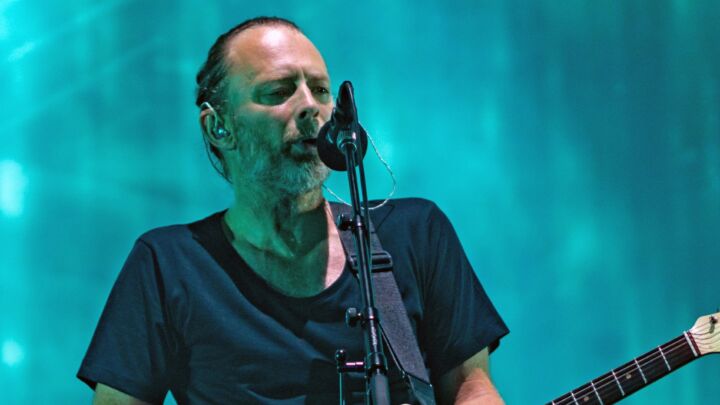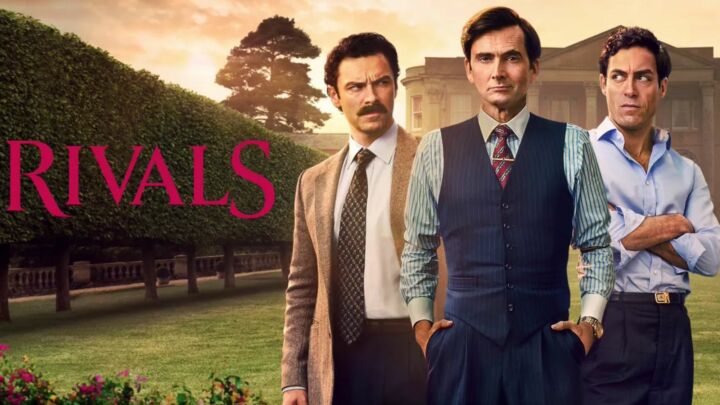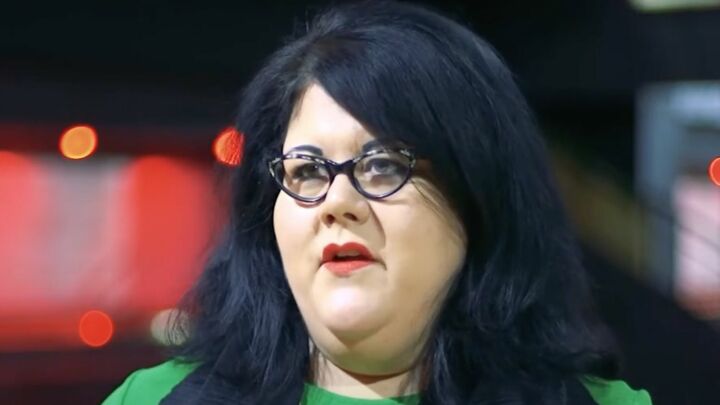‘Can’t non-white people ever just make art?’
Sonya Dyer, author of a provocative new essay, talks to spiked about how diversity policies in the arts ghettoise black and Asian artists.

Want to read spiked ad-free? Become a spiked supporter.
‘Within arts organisations, black people are seen as particularly needy, almost like in charity events for Africa. You know, there’s a kind of Christian Aid mentality – black people are not treated as individuals.’
Sonya Dyer, a London-based artist and arts consultant and the author of Boxed In: How Cultural Diversity Policies Constrict Black Artists, is telling me about a meeting she once attended with the newly appointed director of a major arts organisation. The director had suggested creating bursaries for artists at different stages in their careers: ‘You know, emerging artists, mid-career artists, black artists…’, the director said. To Dyer, this epitomised the common tendency within cultural institutions to treat ‘black artists’ as a separate category and to view their ‘separateness’ as a permanent state. Accordingly, ‘unlike emerging artists (who will one day become “mid-career” artists), black artists are stuck, and need a special fund to help them through, and always will do’, writes Dyer.
Boxed In, which draws on interviews with UK artists and curators, was produced by the Manifesto Club’s Artistic Autonomy Hub, a network of artists, arts administrators, researchers and students who want to defend artistic autonomy and a vibrant culture founded upon artistic freedom. They argue that diversity schemes and targets are unwittingly creating a ghetto for black and Asian artists by pigeonholing them according to their ethnicity.
Sitting in an East End café, Dyer tells me several anecdotes that suggest that while the arts world may not be overtly racist today – it has increasingly accepted ethnic minorities over the past 30 years – it has become more ‘racialised’ and segregating.
In the 1970s and 80s, radical arts movements challenged the lack of support for black artists in Britain. But whereas exhibitions by black and Asian artists during that time were often seen as temporary responses to racism, as a step in the direction towards a more equitable society, today’s establishment-led diversity policies emphasise the supposed difference and separateness of non-white artists.
Paradoxically, this only ghettoises such artists, pushing them into separate systems of funding and exhibition. It also unfairly places a ‘burden of representation’ on ethnic minorities, who are expected to demonstrate their ethnicity in their work or be responsible for bringing in ‘diverse’ audiences into galleries and museums. It is as if the subject matter of non-white artists should always be about negotiating identity and certain members of the public can only appreciate work that reflects their own ethnicity. As Dyer asks: ‘Can’t we (non-white people) ever just make art?’
The focus on diversity ultimately reinforces an essentialist view of human beings as bound by skin colour, and it is far removed from the ideal of a ‘colour blind society’ according to which people’s colour or cultural background really should have no bearing on their status as equal citizens.
Though Dyer thinks the idea of a colour-blind society is ‘a utopia that probably won’t be achieved’, she says she believes in appreciating individual talent. But rather than promoting talent and treating artists as individuals to be judged by merit, today cultural institutions seem more concerned with ticking boxes for ethnic diversity targets set by policymakers.
Dyer herself made a decision very early on in her career not to be involved with any diversity-related jobs. ‘I felt very uneasy about it’, she says. ‘To be involved in a job that is predicated around my cultural background seemed a bit strange to me… My interest in the arts isn’t just an interest in black people in the arts, it’s an interest in the arts full-stop.’
Dyer comes across as both passionate and measured and so enthusiastically responds to my questions that by the end of our conversation, her cup of camomile tea is almost untouched. She started out as a teenage fine arts student at Goldsmith’s, the prestigious arts college in London, and now has years of experience in arts administration, consultancy and public programming. As she tells me, ‘I haven’t just read about all this stuff in books’. Instead, she has gained first-hand knowledge of the art world by working within it, and she does not shy away from challenging the patronising assumption that ‘non-white artists are inherently needy and require specially-branded help’.
While we speak, Dyer effortlessly and eloquently moves from an account of her own professional background to a breakdown of the history of the Black Arts movement and the origins and development of diversity policies. She told me how these changes have affected white and non-white artists and suggested how current systems of funding could be changed to encourage more fruitful debate about the role of arts in society.
Acknowledging that some artists may truly want to focus on ethnicity and identity in their work, Dyer tells me there is nevertheless a need for greater opportunities for those who don’t. Artists, administrators and curators should be able to work with greater autonomy than is possible in the current situation, says Dyer, and they need to find ways to escape the ‘diversity trap’.
In Boxed In, Dyer asserts that current public policy is not, in fact, driven by artists, but by New Labour’s political agenda – ‘specifically the idea that the arts must be made to “represent” and “improve” society’. ‘There are lots of people for whom instrumentalism is a very good thing’, she tells me, ‘and that’s fair enough for them, but for everyone else it’s very difficult. Even in terms of freelance jobs within the arts, so many of them involve, at some point, doing a workshop with youngsters or what have you. Again, if that’s what you want to do, then that’s good, but there’s a lack of diversity of opportunity for people who don’t actually want to go down that route, who don’t have that specialist skill. In fact, only a handful of artists are really, really good at that sort of thing.’
One of Dyer’s jobs is to advise artists on their Arts Council funding applications and she has found that because there is a widespread impression amongst them that their work must be ‘good for something’, as opposed to just focusing on producing high quality and interesting art, many believe that tacking on education workshops to their applications will help them get the grant. ‘I’m always astounded by the number of people who talk about their idea and then talk about doing an education workshop for refugees. I ask them “Why, how does it relate to anything we’ve just told you?”‘ Given the highly instrumentalist quality of public arts funding, artists find it hard to believe that tacking on such activities won’t help their application.
Dyer has also noticed a perception amongst white artists that there are more opportunities for ethnic minorities to get ahead in the art world. At the same time non-white people think it’s harder for them because ‘they are constantly being told that the reason why things are not working out for them is because of their race as opposed to their professional background. In fact things don’t work out the way most artists expect most of the time because there are so many artists and so few opportunities.’
The art world is a very difficult one to navigate and get ahead in, and Dyer acknowledges that it can be hard for individuals not to yield to the pressures of diversity schemes, or to try to ‘involve other groups’ through education workshops. She also acknowledges that organisations dependent on government funding are under pressure to take diversity policies on board. For instance, Boxed In reveals that UK culture minister David Lammy has pressured galleries to set targets for ethnic minority staff, and that local museums must now draw up diversity plans in order to receive funding.
Still, she knows many artists who, like her, are uncomfortable with diversity schemes and points out that there is a lack of creativity in how funding bodies, such as the Arts Council, deal with pressures to implement them. ‘Rather than thinking, as it were, outside the box about things, there is such a prosaic way of dealing with the situation’, she says.
In Boxed In, she makes clear that while, ostensibly, diversity initiatives give recognition and opportunities to non-white artists, ultimately it keeps them away from the mainstream and from more prestigious positions. Even at the Arts Council, Dyer tells me, non-white people are mainly working in diversity-related jobs.
Dyer wants her report to open up the debate about these issues and to encourage people to be proactive in changing the current situation. She doesn’t claim to have all the answers, but gives several suggestions for how those who feel uncomfortable with diversity initiatives can resist being pigeon-holed, and how funding bodies can re-direct their efforts to promoting equal opportunities for all. Instead of creating separate systems of funding and obsessing about people’s ethnic backgrounds and the supposed neediness of non-white Britons, the Arts Council should concentrate on breaking down barriers for all talented people who want to get in to art schools, do internships in cultural institutions or fund their artistic practice.
Yet institutions that depend on government funding are very likely to bow to external policy agendas, and their operations cannot be divorced from the wider political climate. The growing focus on diversity, for example, cannot be divorced from the expansion of official multiculturalism, which corrodes opportunities for solidarity and equality as it solidifies a sense of difference. So, sure, artists can put pressure on the Arts Council to re-think its criteria for funding, but will that really lead to achieving artistic autonomy? Or should this be sought in other ways, away from funding bodies that are inevitably tied up in government red tape?
‘Well, we’re entitled to public funding’, says Dyer. ‘It’s our taxes and so we are also entitled to communicate with the Arts Council and to encourage them to re-negotiate their relationship with DCMS [the Department for Culture, Media and Sport], which I think is what needs to happen.’ Beyond opening up a dialogue whereby such re-negotiation can become reality, it is crucial that individuals recognise that they can, in fact, make a change. Dyer points to several positive signs that this is happening, mentioning recent books and articles that take a critical stance towards diversity policies, and referring to conversations she has had with fellow artists and curators while researching and writing Boxed In.
Dyer says she is trying to point out that ‘we shouldn’t just accept what we’re told about ourselves and what we are told about what we can or cannot do’ and that ‘artists and curators have more power than they realise. After all, there is no Arts Council without artists and curators. So we need to get together a bit more and stop complaining about these things in private and make them public.’
Decisions about recruitment and funding within the arts should be made on the basis of individual applicants’ experience and the quality of their work, not where their ancestors came from. But as long as the art world is busy obsessing about diversity and patronising black people by treating them like, as Dyer puts it, ‘delicate flowers who can’t handle the truth’, it is hard to see how there can even be a proper discussion about how to judge art according to quality.
The publication of Boxed In, and the campaign planned around it, certainly presents a challenge to the received wisdom that diversity policies are progressive initiatives for equal opportunities within the art world. By getting rid of the top-down initiatives that turn art practice into exercises in fulfilling government targets, artists and non-artists alike will be freer to enjoy art for its aesthetic values and for how it challenges our imaginations and our perceptions of the world.
Nathalie Rothschild is commissioning editor at spiked.
Sonya Dyer’s essay Boxed In: How Cultural Diversity Policies Constrict Black Artists is available from the Manifesto Club website.
In an interview with Tiffany Jenkins, Richard Hylton slammed the ‘disorganised apartheid’ of diversity policies. spiked ran a debate on whether or not cultural diversity policy is good for the arts. Josie Appleton argued that such policy substitutes political goals for artistic standards and Munira Mirza said that diversity is divisive. Or read more at spiked issue Arts and entertainment.
Celebrate 25 years of spiked!
A media ecosystem dominated by a handful of billionaire owners, bad actors spreading disinformation online and the rich and powerful trying to stop us publishing stories. But we have you on our side. help to fund our journalism and those who choose All-access digital enjoy exclusive extras:
- Unlimited articles in our app and ad-free reading on all devices
- Exclusive newsletter and far fewer asks for support
- Full access to the Guardian Feast app
If you can, please support us on a monthly basis and make a big impact in support of open, independent journalism. Thank you.






Comments
Want to join the conversation?
Only spiked supporters and patrons, who donate regularly to us, can comment on our articles.